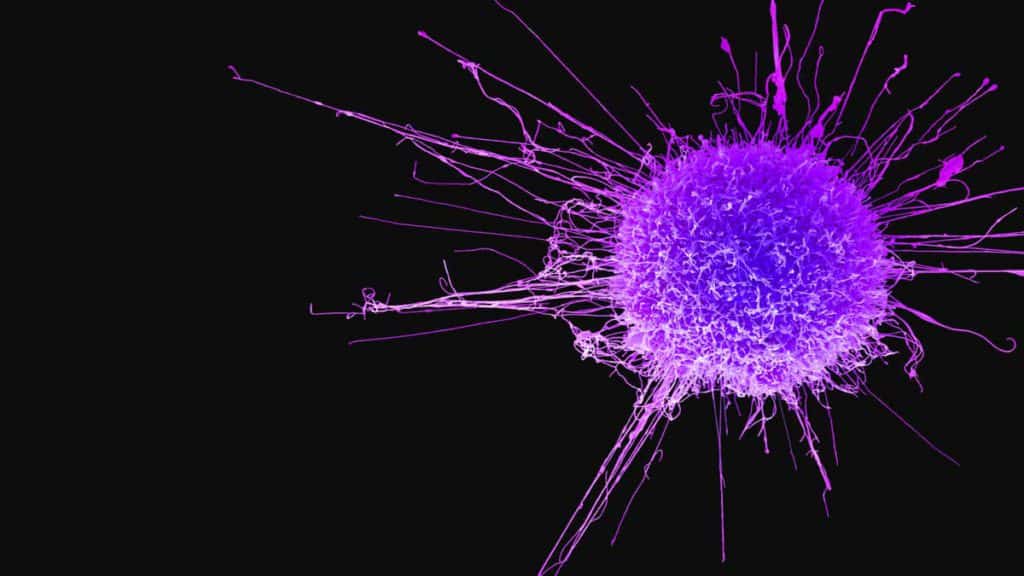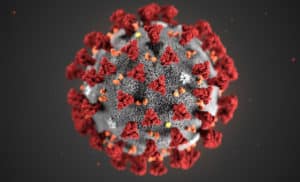What Is Cancer?
Cancer is the name given to a collection of related diseases. In all types of cancer, some of the body’s cells begin to divide without stopping and spread into surrounding tissues.
Cancer can start almost anywhere in the human body, which is made up of trillions of cells. Normally, human cells grow and divide to form new cells as the body needs them. When cells grow old or become damaged, they die, and new cells take their place.
Most of the body’s cells have specific functions and fixed lifespans. While it may sound like a bad thing, cell death is part of a natural and beneficial phenomenon called apoptosis.
A cell receives instructions to die so that the body can replace it with a newer cell that functions better. Cancerous cells lack the components that instruct them to stop dividing and to die.
As a result, they build up in the body, using oxygen and nutrients that would usually nourish other cells. Cancerous cells can form tumors, impair the immune system, and cause other changes that prevent the body from functioning regularly.
Cancerous cells may appear in one area, then spread via the lymph nodes. These are clusters of immune cells located throughout the body.
When cancer develops, however, this orderly process breaks down. As cells become more and more abnormal, old, or damaged cells survive when they should die, and new cells form when they are not needed.
These extra cells can divide without stopping and may form growths called tumors. Many cancers form solid tumors, which are masses of tissue. Cancers of the blood, such as leukemias, generally do not form solid tumors.
Overview

Cancerous tumors are malignant, which means they can spread into, or invade nearby tissues. Also, as the tumors grow, some cancer cells can break off and travel to distant places in the body through the blood or the lymph system and form new tumors far from the original tumor.
Unlike malignant tumors, benign tumors do not spread into, or invade nearby tissues. Benign tumors can sometimes be quite large, however. When removed, they usually don’t grow back, whereas malignant tumors sometimes do.
Unlike most benign tumors elsewhere in the body, benign brain tumors can be life-threatening.
Types
There are over 200 types of cancer and far too many to include in this introductory article. This list is expanded below to list more specific types of cancers found in each general category:
It is a type of cancer that starts in cells that make up the skin or the tissue lining organs, such as the liver or kidneys. Like other types of cancer, carcinomas are abnormal cells that divide without control. They are able to spread to other parts of the body but don\’t always.
A sarcoma is a type of cancer that starts in tissues like bone or muscle. Bone and soft tissue sarcomas are the main types of sarcoma. Soft tissue sarcomas can develop in soft tissues like fat, muscle, nerves, fibrous tissues, blood vessels, or deep skin tissues.
Leukemia is a cancer of the blood or bone marrow. Bone marrow produces blood cells. Leukemia can develop due to a problem with blood cell production. It usually affects the leukocytes or white blood cells.
Lymphoma is cancer that begins in infection-fighting cells of the immune system, called lymphocytes. These cells are in the lymph nodes, spleen, thymus, bone marrow, and other parts of the body. When you have lymphoma, lymphocytes change and grow out of control.
-
Central Nervous System Cancers
A central nervous system (CNS) tumor begins when healthy cells in the brain or the spinal cord change and grow out of control, forming a mass. A tumor can be either cancerous or benign. A cancerous tumor is malignant, meaning it can grow and spread to other parts of the body.
Learn More
Symptoms & Signs
It\’s important to be aware of any unexplained changes to your body, such as the sudden appearance of a lump, blood in your urine, or a change to your usual bowel habits.
These symptoms are often caused by other, non-cancerous illnesses, but it\’s important to see your GP so they can investigate.
If your GP suspects cancer, they\’ll refer you to a specialist – usually within 2 weeks. The specialist will carry out further tests, such as a biopsy or X-ray, and plan any necessary treatment.
Reach out to the doctor if you\’ve experienced one of the changes listed below and it\’s lasted for more than a few weeks:
- Blood in your Excreta
- Diarrhea or Constipation
- The feeling of not having fully emptied your bowels after going to the toilet
- Pain in your stomach abdomen or anus
- Persistent Bloating
-
Coughing, Chest Pain, and Breathlessness
Visit your doctor if you\’ve had a cough for more than 3 weeks. Symptoms such as shortness of breath or chest pain may be a sign of a severe (acute) condition, such as pneumonia. Reach out to the doctor straight away if you experience these types of symptoms.
You should also see your GP if you have any unexplained bleeding, such as:
- Blood in your urine
- Bleeding between periods
- Blood from your bottom
- Bleeding when you cough
- Blood in your vomit
See a doctor if you notice a lump in your breast or if you have a lump that\’s rapidly increasing in size elsewhere on your body. The doctor will refer you to a specialist for tests if they think you may have cancer.
Check if you have moles that:
- Changes shape or look uneven
- Starts itching, crusting, flaking, or bleeding
- Changes color, gets darker, or has more than 2 colors
- Gets larger or more raised from the skin
Any of the above changes means there\’s a chance you have malignant melanoma, a form of skin cancer.
You should also see your doctor if you\’ve lost a lot of weight over the last couple of months that cannot be explained by changes to your diet, exercise, or stress.
Causes

There are many causes of cancer, and some are preventable.
The risk factors for cancer include:
Other causes of cancer are not preventable. Currently, the most significant unpreventable risk factor is age. Basis researches, 87 percent of cancer cases in people ages 50 years or older.
The following table (National Cancer Institute 2016) gives the estimated numbers of new cases and deaths for each common cancer type:
| Cancer Type |
Estimated New Cases |
Estimated Deaths |
| Bladder |
76,960 |
16,390 |
| Breast (Female — Male) |
246,660 — 2,600 |
40,450 — 440 |
| Colorectal Cancer |
134,490 |
49,190 |
| Endometrial |
60,050 |
10,470 |
| Kidney (Renal Cell and Renal Pelvis) Cancer |
62,700 |
14,240 |
| Leukemia (All Types) |
60,140 |
24,400 |
| Lung (Including Bronchus) |
224,390 |
158,080 |
| Melanoma |
76,380 |
10,130 |
| Non-Hodgkin Lymphoma |
72,580 |
20,150 |
| Pancreatic |
53,070 |
41,780 |
| Prostate |
180,890 |
26,120 |
| Thyroid |
64,300 |
1,980 |
The three most common cancers in men, women, and children are as follows:
- Men: Prostate, lung, and colorectal
- Women: Breast, lung, and colorectal
- Children: Leukemia, brain tumors, and lymphoma
Learn More
Possible Treatments
Doctors usually prescribe treatments based on the type of cancer, its stage at diagnosis, and the person’s overall health.
Innovative research has fueled the development of new medications and treatment technologies.
Below are examples of approaches to cancer treatment:
- Chemotherapy aims to kill cancerous cells with medications that target rapidly dividing cells. The drugs can also help shrink tumors, but the side effects can be severe.
- Hormone Therapy involves taking medications that change how certain hormones work or interfere with the body’s ability to produce them. When hormones play a significant role, as with prostate and breast cancers, this is a common approach.
- Immunotherapy uses medications and other treatments to boost the immune system and encourage them to fight cancerous cells. Two examples of these treatments are checkpoint inhibitors and adoptive cell transfer.
- Precision Medicine, or Personalized Medicine, is a newer, developing approach. It involves using genetic testing to determine the best treatments for a person’s particular presentation of cancer. Researchers have yet to show that it can effectively treat all types of cancer, however.
- Radiation Therapy uses high-dose radiation to kill cancerous cells. Also, a doctor may recommend using radiation to shrink a tumor before surgery or reduce tumor-related symptoms.
- Stem Cell Transplant can be especially beneficial for people with blood-related cancers, such as leukemia or lymphoma. It involves removing cells, such as red or white blood cells, that chemotherapy or radiation has destroyed. Lab technicians then strengthen the cells and put them back into the body.
- Surgery is often a part of a treatment plan when a person has a cancerous tumor. Also, a surgeon may remove lymph nodes to reduce or prevent the disease’s spread.
- Targeted Therapies perform functions within cancerous cells to prevent them from multiplying. They can also boost the immune system. Two examples of these therapies are small-molecule drugs and monoclonal antibodies.
Doctors will often employ more than one type of treatment to maximize effectiveness.
For more such transformation stories, health content, and recipes! Also, don’t forget to follow us on Instagram for the daily dose of the Healthiest Lifestyle!
Learn More











